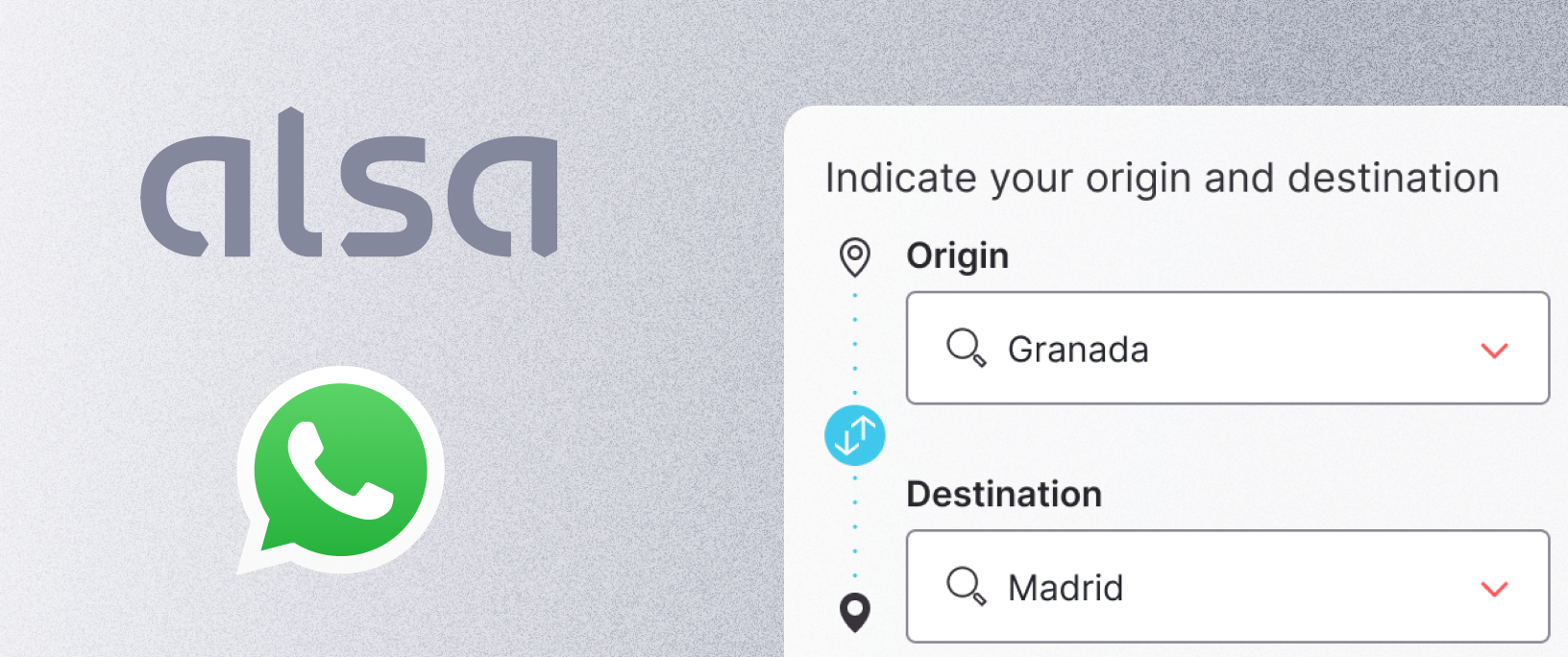
Banking chatbots are on track to have a 90% success rate by 2027, chatbots will also be customers’ preferred channel to communicate with brands. This means chatbots are becoming essential for banks to stay relevant, meet rising expectations, and offer a better customer experience.
In this article, we’ll go over everything you need to know about banking chatbots: what they are, why they matter, and what the future holds.
What are banking chatbots?
Banking chatbots are software applications that conduct online chat conversations via text, in lieu of providing direct contact with a live human agent. They use predefined conversation flows, natural language processing, and/or machine learning to interpret customer requests.
While banking chatbots are designed to automate customer conversations, they also complement their human counterparts. They can automate parts of the conversation and then perform a chatbot to human hand off if necessary.
Banking chatbots have evolved greatly over the past few years. Chatbot technology has improved, and so have the rules that govern them. Open banking initiatives have made it easier for banks to innovate and collaborate with chatbot service providers. As a result, chatbots in the banking sector are becoming even more intelligent.
The focus on improving the banking customer experience has also put chatbots in the spotlight. Banks are finding that chatbots are necessary to scale great customer service. They allow banks to offer the immediacy, convenience, and personalisation that their customers expect.
How are chatbots changing the banking industry and financial services?
Chatbots are helping the banking and financial services industries get more conversational. In fact, chatbots are part of a broader shift in the way banks and customers interact. This concept is called conversational banking, and it has massive implications for banks and financial institutions.
In essence, conversational banking means communicating with a chatbot about finances, bank balances, loan options, spending habits, and more. It allows the customer to ask questions just as they would in a real-world face-to-face exchange with a teller.
Conversational commerce puts the customers’ needs at the centre, rather than forcing them to learn the bank’s terminology or navigate unfamiliar software interfaces. It adds speed, accuracy, transparency, and clarity. These are critical elements of a good banking customer experience.
Why are banking chatbots important now?
Banking chatbots are more important than ever. They play an integral role in helping banks meet rising customer expectations for improved customer service and greater communication efficiency..
Customers expect more from their banking experience
Customer expectations are rising. People aren’t just comparing banks to other banks. They’re comparing their banking experiences to the services that Netflix, Spotify, Amazon, and Uber provide.
This has to do with what marketers call “liquid expectations,” when customer experiences seep over from one industry to an entirely different industry. For example, customers compare the way their credit card application process was handled against their most recent Amazon return, and compare their airline check-in to that of their last Airbnb.
As a result, customers are choosing financial service providers that can offer hyper-convenience, which can be categorised into four key themes:
- What they want
- When they want it
- How they want it
- Where they want it
Banks will have to adapt if they want to remain relevant. Banking chatbots help deliver the level of convenience that customers expect.
People are ready and willing to embrace chatbots
Chatbots are no longer a novelty. In the past, chatbot experiences were limited and could easily lead to frustration. But technology has evolved so much since then.
Today, 87% of consumers report having a neutral or positive customer experience with chatbots and only 13% report a negative customer experience. In fact, banks now use chatbots to increase their net promoter scores and reduce customer churn.
What’s more, after having a positive experience with a chatbot, customers place higher trust in the company. Many tend to share positive feedback with their close ones, give the business high ratings, or share positive feedback on social media.
Benefits of banking chatbots
Banking chatbots save time and money while improving the user experience. They also help banks meet key performance indicators.
Banking chatbots save time
Banking chatbots automate conversations, freeing up human agents for higher-value work. Customers get immediate answers to simple questions, and more human resources are available when it matters most.
This translates into greater operational efficiency as banks both save money with every interaction and provide better customer experiences.
Banking chatbots save money
It’s no surprise that efficiency and cost savings go hand in hand. Nick Maynard from Juniper Research explains:
“Chatbots in banking allow heavily automated customer service, in a highly scalable way. This type of deployment can be crucial in digital transformation, allowing established banks to better compete with challenger banks.”
Banking chatbots improve the user experience
Banking chatbots add speed, convenience, personalisation and context to customer experiences. They help banks meet customers how, when, and where customers want to be met, adding to an omnichannel customer support strategy.
For example, some of the best banking chatbots can be found on WhatsApp, Facebook Messenger, and other messaging channels. Others are improving the user experience within mobile banking apps.
Improving the customer experience directly impacts profit. A one-point increase in a CX index score can help traditional retail banks earn an additional $144 million in annual revenue.
Banking chatbots help banks meet their KPIs
Lastly, banking chatbots help banks improve their key performance indicators. These include metrics such as:
- Time to resolution
- Customer churn
- Customer acquisition costs
- Customer loyalty
- Organisational efficiency
- Customer engagement
Banking chatbots use cases
Below are the top five examples of how institutions can use banking chatbots to gain a competitive edge.
1. Automate FAQs
Help customers check bank balances, find ATMs, check interest rates, and much more. Answer questions about credit or loan applications and get customers the information they need, exactly when they need it. On average, banks that use Hubtype automate 80% of their total inquiries.
2. Meet and track SLAs (service level agreements)
Exceed performance standards with intelligent automation. Decrease first response times (FRTs) and escalate conversations to human agents if needed.
3. Turn transactions into relationships
Automate questions about bonus points, recurring payments, expenses, and transfer limits. Turn simple transactions into convenient, memorable experiences. Customers who are consistently delighted with a bank's services are more likely to recommend it to family and friends.
4. Send reminders and notifications
Give your customers peace of mind with reminders about payment deadlines and financial processes. Notify customers about changes in credit scores or relevant news.
5. Solve urgent issues fast
Offer immediate help when it matters most. Send notifications about suspicious charges and help customers take immediate action. This aids to providing a better service and building trust.
The future of chatbots in banking
The future of chatbots in banking is bright. Chatbots in the banking sector will continue to evolve and demonstrate a proven record of seamless service delivery, which will drive adoption by initially sceptical financial institutions.
They will continue to boost revenue and lower costs, and will no longer be a competitive advantage but rather a critical tool for survival.
If you want to offer better service and determine in which ways your business can take advantage of banking chatbots, contact us, and we’ll help you find the best solution!









.jpg)

